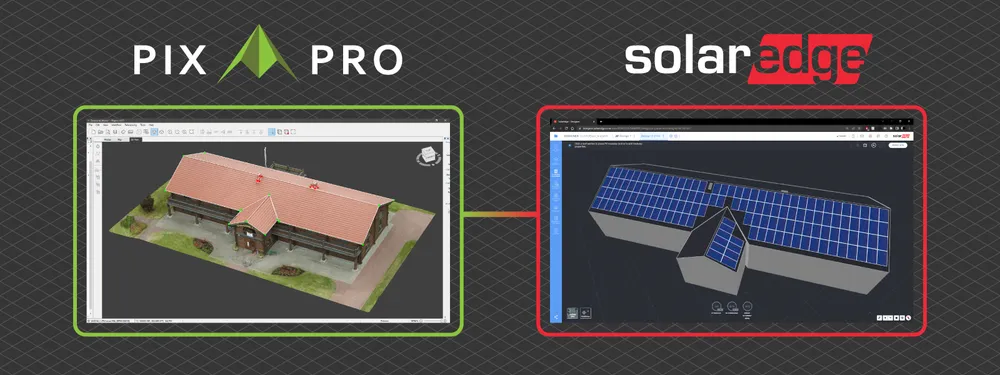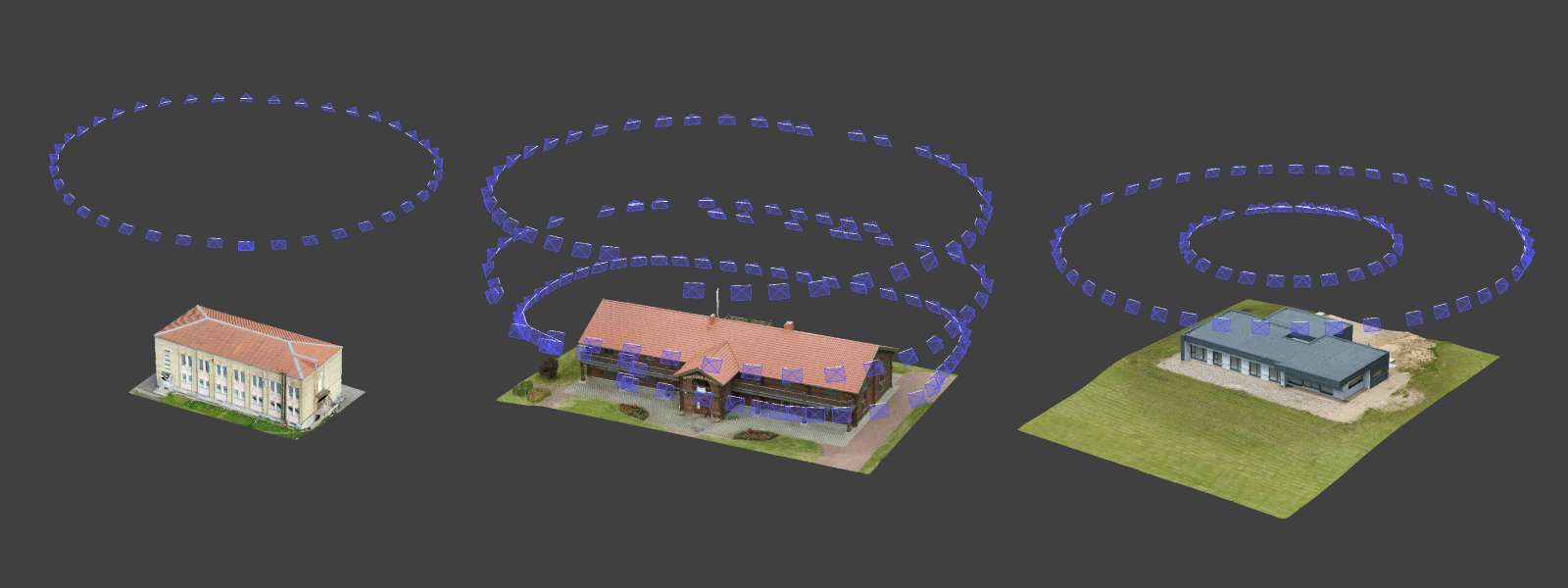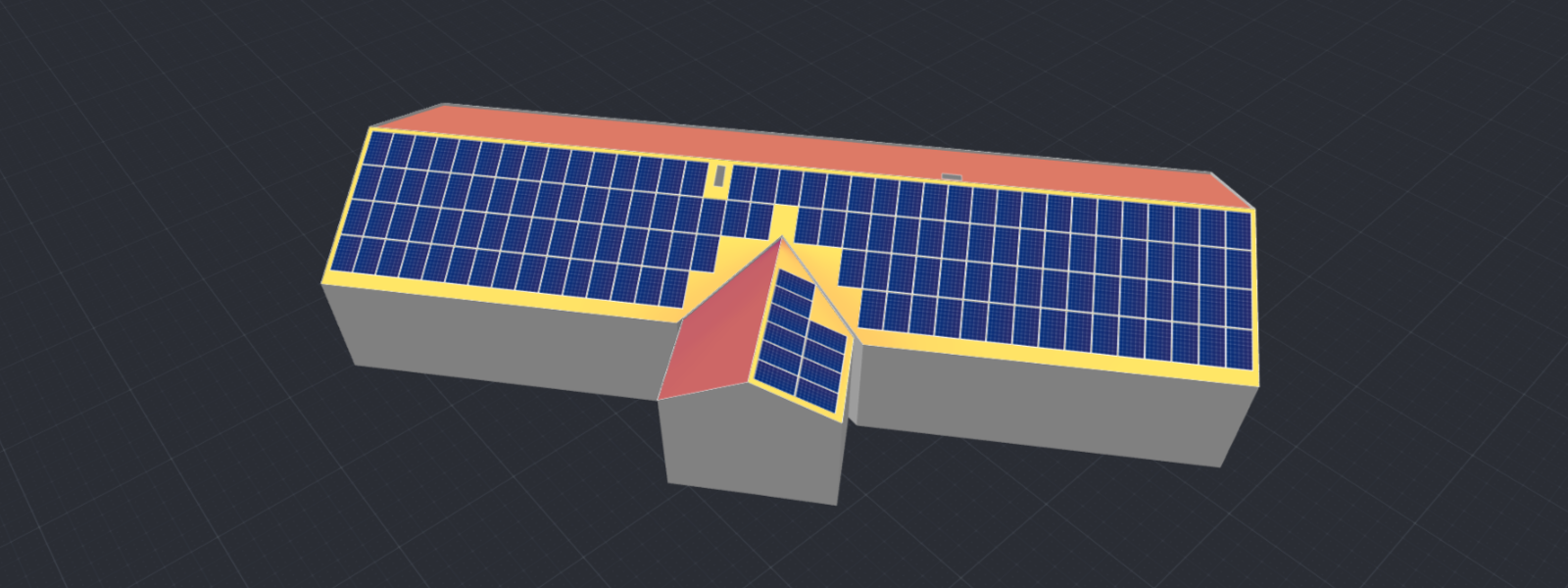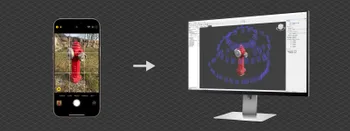Pixpro And SolarEdge
 Lukas
Zmejevskis
Lukas
Zmejevskis

To use photogrammetric data in a specific industry – you need to use specialized tools. SolarEdge designer is a tool for PV professionals that can help to create a simulation and a report of to-be-installed solar panels for residential and industrial roofs. This blog post will look at how to use photogrammetric data to draw and then import accurate lines into Solaredge designer. We will use the lines as a roof framework for the simulations and reporting.
Data Capture
One of the most accessible use cases for aerial photogrammetry is capturing 3D data necessary to draw lines representing roof edges. We can use a single orbit around the roof for residential houses to get a perfectly adequate 3D scene. For large commercial buildings, we can use multiple orbits and nadir scans. This blog focuses on smaller residential roofs – the most common use case. If you want more knowledge on data gathering, read more in other blog posts.
Roof Scanning With Photogrammetry
Measuring Roofs with Photogrammetry
3D Vectors From Photogrammetry
Photogrammetry Fails and Issues Part 1
Photogrammetry Fails and Issues Part 2

Lines in Pixpro
Pixpro software is ideally suited for use alongside SolarEdge Designer as it does have a quick and precise way of drawing lines and exporting them. You can also draw lines without having a 3D mesh layer generated, saving you time. But having a full 3D model is more convenient and visually appealing. Watch the video below on how to draw precise lines in Pixpro.
Export and Import
Once you have all the desired lines representing your roof, you can export these lines as a .dxf file from Pixpro and import them into SolarEdge Designer. A video on how to do that is below:
Editing in SolarEdge
At the time of writing, SolarEdge does not support heights in the .dxf files, meaning you need to add the z-axis measurements manually. It entails going to the 3D view in SolarEdge and adding altitude to each imported line accordingly. It is not a huge issue, as we have the perfect reference in Pixpro. We can get all the measurements in Pixpro and just input that into SolarEdge. Additionally, we can add an orthophoto view from Pixpro, so we do not have to work on lower-resolution map imagery.
With heights transferred from Pixpro, we can start adding solar panels and running other PV-specific calculations. We leave this part to the solar installation professionals.

Conclusion
If you work in the PV industry – photogrammetry is your best tool. We can capture factual information eliminating guesswork and future disputes. We can use Pixpro to measure and draw precise lines and polygons and integrate them with other tools like SolarEdge. Gone are the days of physically inspecting and measuring roofs and putting yourself in danger. Now it is just a matter of taking a few photos with your drone and processing them in Pixpro.

Photographer - Drone Pilot - Photogrammetrist. Years of experience in gathering data for photogrammetry projects, client support and consultations, software testing, and working with development and marketing teams. Feel free to contact me via Pixpro Discord or email (l.zmejevskis@pix-pro.com) if you have any questions about our blog.
Related Blog Posts
Our Related Posts
All of our tools and technologies are designed, modified and updated keeping your needs in mind

No. 1 Mistake You Are Making in Photogrammetry Right Now
As photogrammetry software developers, we need to troubleshoot multiple projects from our clients every week. The number one mistake, especially when making measuring projects, is using redundant photos. These photos can appear for a few reasons, which I will describe, and they can be quickly dealt

Classic Photogrammetry with an iPhone
Photogrammetric 3D scanning can turn a bunch of regular photos into a 3D model or a scene. So, we only need a camera and some knowledge of how to take photos. In the previous article, we tested the latest iPhone camera with a few different apps.

Manual Photography with iPhone 16 Pro Max - Android/Windows User Perspective
Adage as old as touchscreens on portable devices tells us that the best camera is the one you have. We have the luxury of having cameras everywhere we go because we are dependent and addicted to smartphones.
Ready to get started with your project?
You can choose from our three different plans or ask for a custom solution where you can process as many photos as you like!
Free 14-day trial. Cancel any time.
.svg@webp)